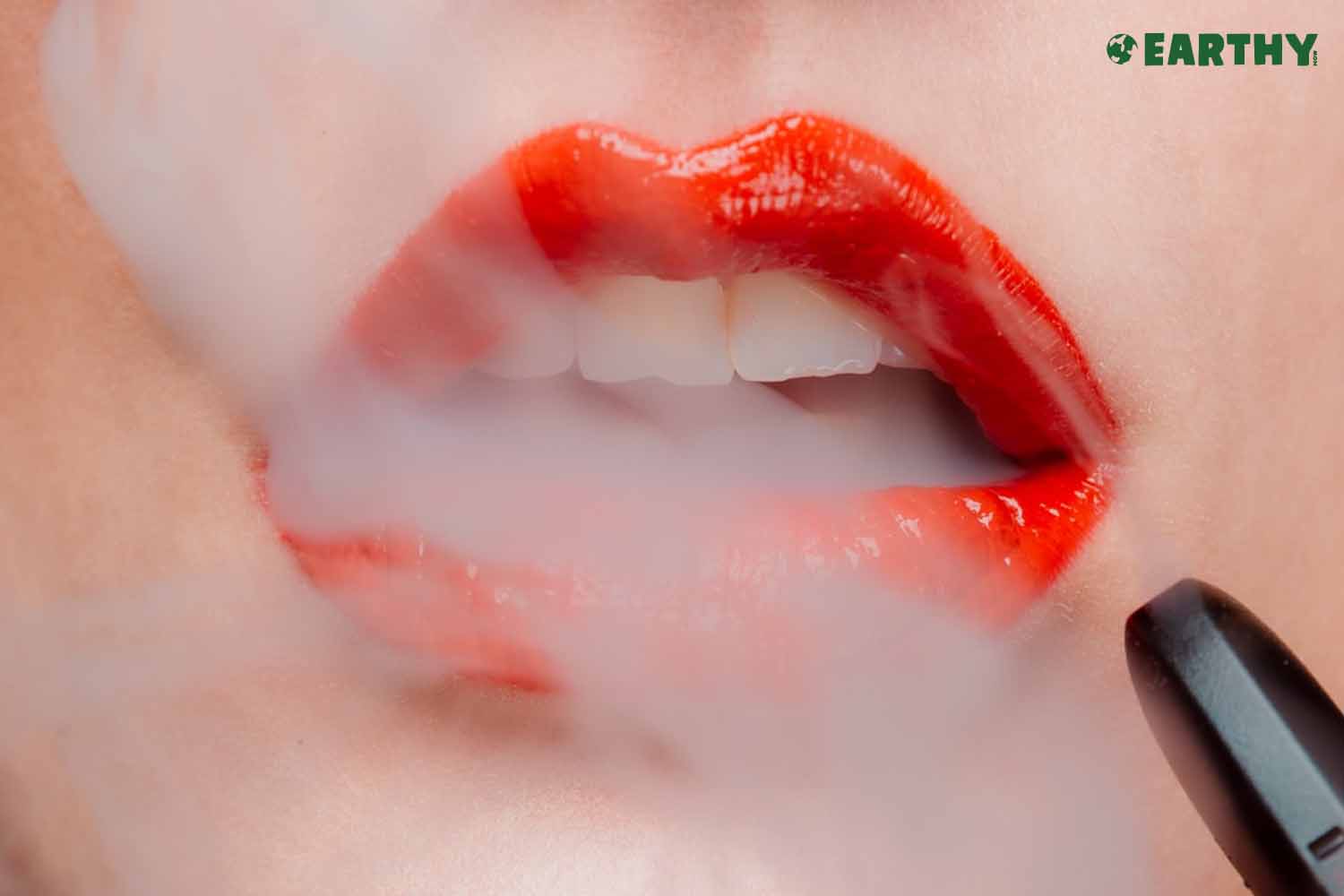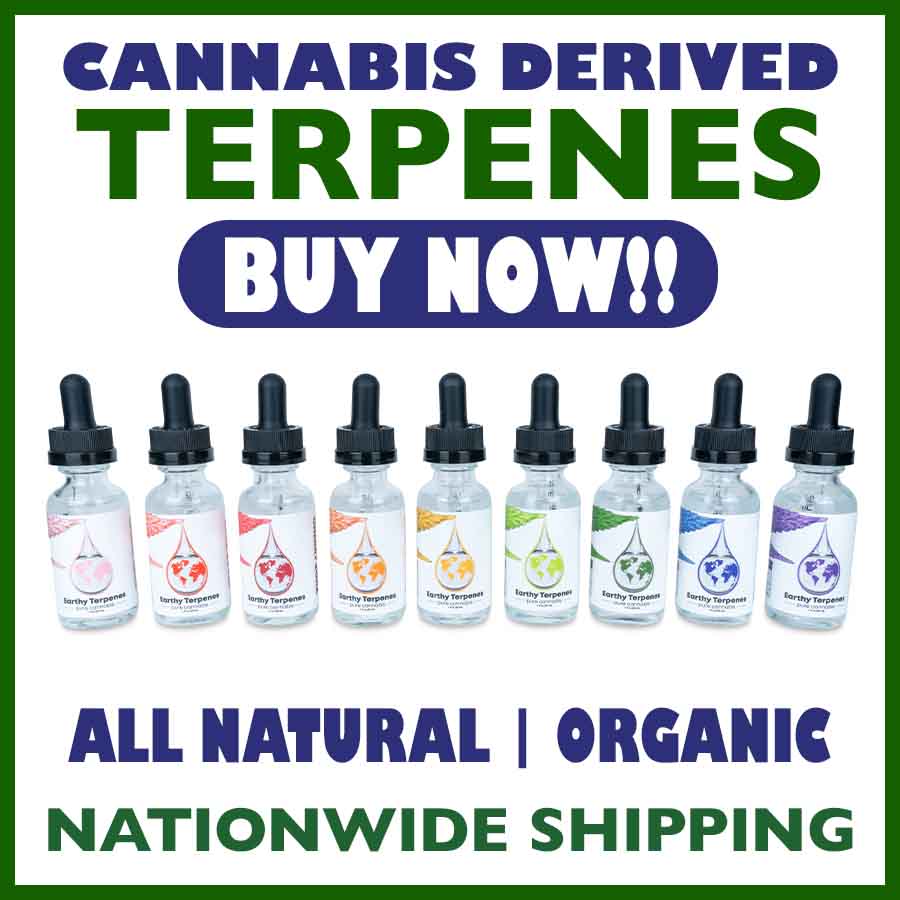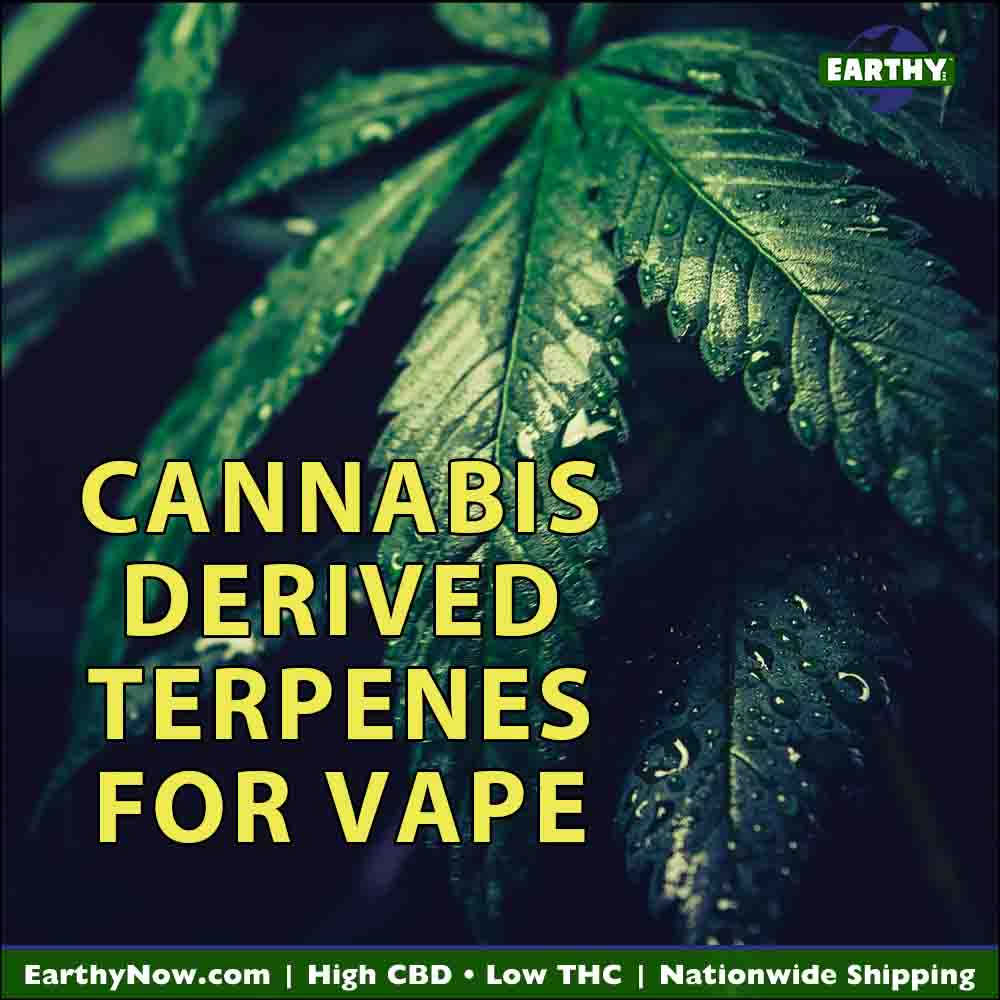Over the past twenty years, vaping has become an enormously popular alternative to smoking both tobacco and cannabis. But how do cannabis derived terpenes for vapes fit into the picture?
The shift from smoking to vaping comes with a number of benefits and options, yet this new method of inhaling nicotine or cannabinoids ushers in heightened complexity about how to best flavor and enhance vape products. For instance, vaping hemp flower yields a different experience than, say, vaping tobacco with added cannabis terpenes. With the flower, you’ll be vaping terpenes that naturally occur in the cannabis strain along with its other cannabinoids and materials, as opposed to the extracted terpenes. With vape products, the extracted cannabis terpenes offer a rich palette of authentic flavor potential.
In this article, we’ll break down important information about vaping terpenes so that you can better understand the role they play in shaping and upgrading your vape experience.
Can you vape terpenes?
Ever since Chinese inventor Hon Lik invented his e-cigarette in 2003 [1], people have been vaping terpenes, as both tobacco and cannabis plants have naturally occurring terpenes. Yet, people have a lot of questions about vaping terpenes. What effects do different terpenes produce when vaped? Are there better terpene strains to vape than others? You’re not alone if you have similar questions.
What are terpenes?
Terpenes in our food, the flowers we smell, and, yes, the cannabis products we enjoy. They are simply chemical compounds found in plants that affect the way they smell and taste. Cannabis plants just happen to contain high concentrations of these aromatic compounds.
Different terpene profiles in nature determine the characteristic aroma of a plant. For instance, the common terpene linalool gives lavender its distinctive floral scent, and the terpene alpha-pinene contributes to the woody, earthy aroma of pine needles and rosemary.
What’s more, the scent of a plant can help it survive. Terpenes can protect plants from being eaten by insects or other animals by giving off a repellent scent [2]. On the other hand, other terpenes emit pleasing aromas to attract pollinators, like the beta-myrcene does for wild thyme, attracting bees to the plant.
Top 20 Cannabis Derived Terpenes
Are terpenes & essential oils the same thing?
Terpenes and essential oils are strongly related but not the same. Terpenes are the primary constituents of essential oils, yet there are some key differences. The main difference is that essential oils contain all the main compounds of a particular plant species, while terpenes are isolated from the other components. When people extract only the terpenes from a given plant, as opposed to extracting the essential oil in its entirety, they are able to mix combinations of terpenes from plant material to create concentrates with more complex and potent scents.
Cannabis-derived terpenes vs. botanical terpenes
Though terpenes extracted from all types of cannabis strains are technically botanically-derived, because cannabis is a plant, the cannabis industry has come to differentiate between cannabis-derived terpenes and botanical-derived (non-cannabis-derived) terpenes.
The same terpenes can often be derived from either cannabis or botanical sources. For example, alpha-pinene, which is high in mint plants and pine trees, is also high in cannabis strains such as Hawaiian Haze and Canna Cake.
Cannabis derived terpenes have an advantage over botanical terpenes for vapes, especially if they are whole plant extractions to capture the as much of the essence of a strain as possible to preserve the potential entourage effect—more on that below.
Vape ingredients overview
There are four main ingredients in vape oil for vape pens and mods:
- Vegetable glycerin
- Propylene glycol
- Cannabinoids such as CBD or THC (for cannabis), or Nicotine (for tobacco),
- Flavoring compounds [3]
The billowing vapor you see has a lot to do with the vegetable glycerin (VG). A clear and odorless liquid, VG is derived from plant oils, usually the palm plant. It has been described as tasting slightly sweet and is also used in foods and cosmetics [3].
Propylene glycol (PG) is a synthetic compound made from sugar alcohol. Used for over a century to produce stage smoke, PG is now added in vapes to create clouds of vapor and what vape users refer to as the “throat hit,” which is a desired sensation indicating that you have inhaled something. Additionally, PG helps to carry the flavors of the vape product [3]. People who vape as an alternative to smoking tobacco often enjoy having nicotine in their e-liquids. On the other hand, if a vaper seeks the effects of the cannabinoids in cannabis, THC (psychoactive) and CBD (non-psychoactive) are popular ingredients in vape oils.
The fourth category of vape ingredients is where terpenes come into play: flavorings. While vape products include a vast array of flavors spanning from donut to watermelon, companies may add terpenes to either cannabis or tobacco vapes to produce pleasing flavors that may especially appeal to cannabis enthusiasts. For example, Earthy’s Cherry Soda extract of pure terpenes is derived from a robust Indica-dominant hybrid strain with a fruity, spicy sweetness and fresh citrus notes. The specific terpenes in Cherry Soda are the common cannabis terpenes myrcene, limonene, and beta-caryophyllene. These are joined by secondary level terpenoids alpha-pinene, ocimene, beta-pinene and many others, to complete the main terpene profile.
Terpenes’ role in flavor and effects
The terpenes found in cannabis may not only affect the smell and taste of the products they flavor but may also potentially offer other benefits. Researchers continue to study this field of inquiry. Aroma is an uncontroversial benefit of adding terpenes to vapes. Just as the smell of the linalool in the lavender flower might elicit effects, the cannabis terpene content in vapes may presumably act in a similar way. Additionally, anecdotal evidence suggests certain terpenes may play other functions, yet more research is needed [4].
Terpenes & the entourage effect
The entourage effect was first coined by Mechoulam and Ben-Shabat in their 1998 hypothesis that proposed organic compounds such as terpenes interact with other cannabis compounds, working in synergy with the primary endogenous cannabinoids, thereby enhancing the effects of cannabis [5].
Indeed, cannabinoids don’t seem to work in the same way without the entourage effect. For instance, scientists have found that the mixture of all the components of the plant has different effects than isolated compounds. GW Pharmaceuticals, makers of one of the only sanctioned cannabis-based drugs Sativex (called Nabiximols in the U.S.), found that a whole plant extract was more effective than a single compound for certain therapies. Another researcher noted that single-component drugs like Marinol, a synthetic THC pill, have less therapeutic value than those with more cannabinoids [6].
Still, research on the entourage effect is in its infancy, and some scientists seek more data to be fully convinced [7].
However, many cannabis proponents lean on the existing data, as well as popular anecdotal notions of the entourage effect, and embrace the opportunity to create custom blends of terpenes and cannabinoids to offer consumers specifically designed effects.
How to use terpenes in vapes
Terpene extracts are commonly used in vape devices. However, it’s important to be clear that it is not safe to vape undiluted terpenes by themselves. Cannabis vapes generally have cannabinoids and terpenes suspended in a vaporizing e-liquid base. These mixtures of propylene glycol and vegetable glycerin serve as the base liquid in which to add terpenes and other compounds.
How much to use
Terpenes are highly concentrated so a little generally goes a long way. A best practice is to start with 1% terpene in your solution, and to add the terpenes last [8]. Experimentation may be necessary to get the blend just how you want it.
Best terpenes for vapes
Cannabis-derived terpenes make ideal flavoring agents for vape liquids because they smell delicious and authentic and evoke a wide array of associations. If you prefer a specific strain of cannabis, you might choose terpenes extracted from that strain for your vaping pleasure. For instance, if you enjoy the sweet, grassy taste of Sour Lifter— a Sativa-dominant hybrid strain—the terpenes myrcene, terpinolene, and limonene interplay with the secondary terpenes beta-caryophyllene, ocimene, and alpha-humulene to create a sweet, pungent aroma with a full, sour and diesel-y finish.
There are many, many different strain-specific terpene extracts from cannabis out there. Each terpene extract carries with it the unique smells, tastes, and potential benefits of that strain and its particular entourage effect profile. As a general rule, it’s best to choose profiles that fall in line with you or your consumers’ preferences. Sourcing terpenes from a trusted producer is the most important. Always look for a certificate of analysis (COA) for the product you’re purchasing. A COA is a document attesting to a product’s laboratory analysis, which ensures the quality of that specific product.
Are terpenes safe to use in vapes?
It’s important to only use vape products from reputable companies that source their ingredients from expert manufacturers and follow strict guidelines in flavoring your own vape e-liquids [9].
Terpenes are safe to use in vape products if they are formulated properly and diluted sufficiently. Do not create terpene-infused vape liquids without expert guidance. Make sure your vape products contain only the purest and safest flavoring agents.
Are cannabis-derived terpenes legal in vapes?
If terpenes are derived from hemp, which is cannabis containing less than 0.3% Delta-9 THC, they’re federally compliant anywhere in the United States and may be added to vape e-liquids. By contrast, if they’re derived from marijuana, which is cannabis containing more than 0.3% Delta-9 THC, they’re perhaps technically only allowed in states where recreational cannabis is considered legal. The next section will explain this in more depth.
Hemp vs. marijuana and Farm Bills
Both marijuana and hemp come from the cannabis plant, yet the law treats them differently. The 2014 and 2018 Farm Bills established new federal legal definitions and rules for hemp, including the allowance that hemp “and any part of that plant, including the seeds thereof and all derivatives, extracts, cannabinoids, isomers, acids, salts, and salts of isomers, whether growing or not, with a Delta-9 tetrahydrocannabinol concentration of not more than 0.3% on a dry weight basis” may be legally produced, sold, transported and used [10].
Stated simply, cannabis with less than 0.3% Delta-9 THC is defined as hemp, while cannabis with more than .3% Delta-9 THC is defined as marijuana.
Both hemp and marijuana contain terpenes. However, the main difference between the two plants is the type of cannabinoids traditionally associated with them. The most well-known cannabinoid in hemp is the non-psychoactive CBD (cannabidiol), whereas the most well-known one in psychoactive marijuana is THC (tetrahydrocannabinol). However, many cannabinoids including CBG, CBN, Delta-8 THC, Delta-10 THC, and even Delta-9 THC may be derived from federally compliant hemp.
Wrap-up
Cannabis vaping devotees maintain that vapes flavored with cannabis terpenes embody the perfect combination of desirable scents and vape enjoyability. Whether cannabis terpenes are used in cannabinoid vapes or added to nicotine e-liquid, they are a great choice. Consumers and vape manufacturers alike are beginning to understand, appreciate and explore the vast possibilities of terpene-infused vape. Order terpenes from Earthy!
How to Use Cannabis for Better Sex
Disclaimer – Information is provided for educational purposes. It does not, and is not intended to, constitute legal advice or medical advice. We attempt to be accurate and up to date but the legality and science surrounding cannabinoids is evolving. The author is neither a lawyer nor legal expert, doctor nor medical expert. You should check with your local authorities and medical providers before buying or using any products.
References
- This History of Vaping: Who Invented E-Cigs?
- Wikipedia: Terpene
- Vape Juice Ingredients: What’s in them?
- Antibacterial Activity of Terpenes in Essential Oils
- Wikipedia: Entourage Effect
- CNN: Sanja Gupta on Marijuana’s Entourage Effect
- Scientific American: The Entourage Effect is Scientifically Valid
- How To Use Terpenes in Vapes
- 5 Vaping Facts You Need To Know
- Comparing Hemp Provisions in the 2014 and 2018 Farm Bills






